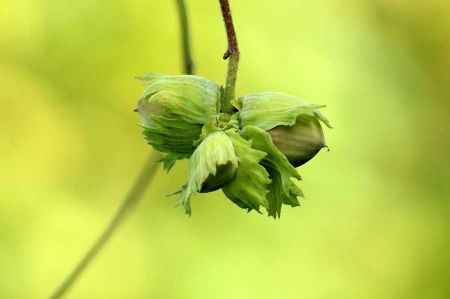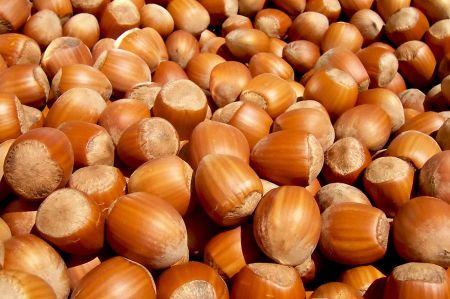Turkey is the largest hazelnut exporter in the world
- Written by Portal Editor
Among all the hazelnut exporting countries in the world, Turkey took first place in the world with sales of 1.29 billion US dollars, the country supplied about 90 other countries with hazelnut products.
The main growing areas are along the Black Sea coast between Samsun and Trabzon. Germany tops the list of countries that import hazelnuts from Turkey with a share of 27 percent, followed by Italy, France and Belgium. 154,241 tons of hazelnuts were exported from Turkey to the EU. The overseas countries were supplied with 18,309 tons and other countries with 10,463 tons of hazelnuts from Turkey.
Even in the early Mesolithic, the hazelnut was an important component in people's diet, as the nuts were easy to collect and well to store and had a high nutritional value. Gradually the nut bushes became cultivated plants and thus belonged to the group of plants used for self-sufficiency with the nut fruits that have been used by humans for thousands of years.
Hazelnut belongs to the birch family

The nuts or the hazelnut oil obtained from them are prepared and used for baked goods, sweets (nougat, brittle) and ice cream. As a snack for cosy get-togethers, hazelnuts are often used as a substitute for chips and flips, with the nuts being given absolute priority for health reasons. Hazelnuts are offered in their shells to crack yourself, especially at Christmas time.
Please read as well: The real walnut
There are numerous cultivars that mostly emerged from selected clones from wild populations. The differences lie in the ecological demands, disease resistance, possible uses and yields. In Turkey, for example, the varieties 'Tomboul' and 'Sivri' are grown very often, in Oregon 'Barcelona' and in Germany the 'Hallesche Riesennuss' or 'Zeller Nuss'.
The propagation usually takes place via vegetative propagation, mainly by root cuttings, subsidence and grafting. In the latter, the hazel tree (Corylus colorant) is often used as a base, as it is easy to care for and harvest with its trunk.
The nuts are also spread by small mammals (squirrels, dormice, mice) and birds (nuthatches and jays). These animals use the nuts as food, through lost nuts and forgotten hiding places for food, they also ensure that the seeds spread.
Difficult harvests require too much work
The area of the hazel covers large parts of Europe as well as Asia Minor and the Caucasus. In the north the distribution area extends to the Orkney Islands, and in Norway to the Arctic Circle. In Sweden the hazel occurs up to the 64th, in Finland up to the 63rd parallel. It is not entirely certain whether the hazel occurs naturally in North Africa and Syria.
The hazel occurs in the south of the distribution area up to much higher altitudes than in the north. The altitude limit in the Ore Mountains and the Vosges is 800 m, in the Northern Alps 1200 m, in Carinthia 1600 m and in Macedonia 1500 m.
The hazel has been known as a fossil since the Pliocene. It survived the last ice age in a retreat in south-western Europe. At the beginning of the early warm period (Boreal) it immigrated from there to Central Europe. It replaced the pine and birch here. From 7000 to 6000 BC during the Middle Stone Age, the hazel was the dominant wood in Central Europe. Then it was pushed back in Central Europe by mixed oak forests. Around 5000 BC hazel reached southern Sweden, 2000 BC. the upper Volga.
The growing areas along the Black Sea coast of Turkey are among the largest in the world. Excellent climatic conditions and good soils ensure good growth and high-yielding harvests, as can be easily seen from the trade statistics. A by-product of the high-yield and therefore world-famous nut harvests is the steadily growing tourism in the Black Sea region.
Please also read:
Kastamonu next to the winter sports mountain Ilgaz
Poznan - after busy Fair day for dinner to Old Market
